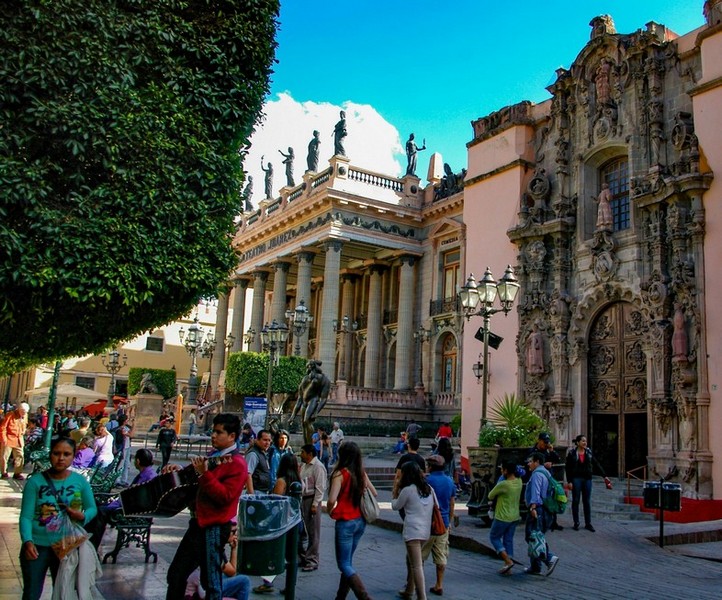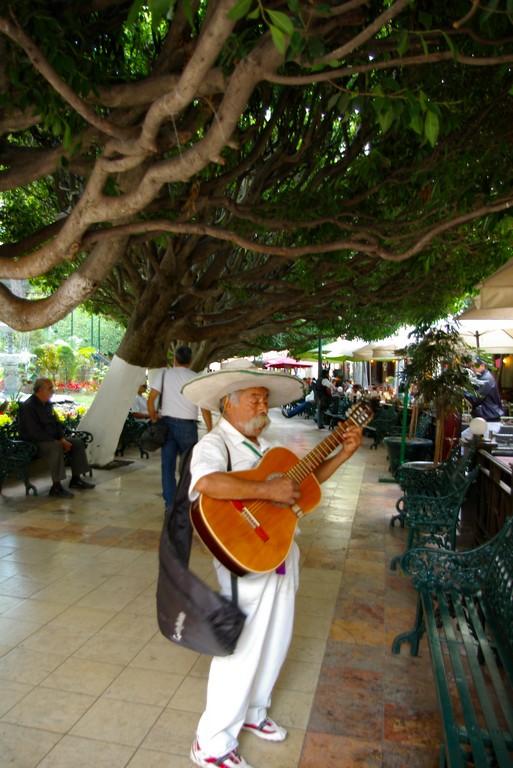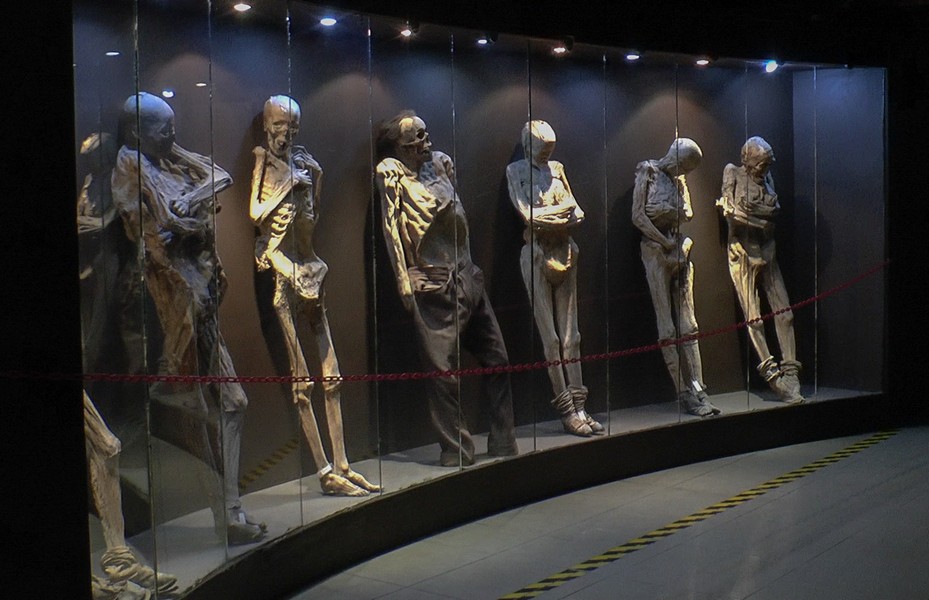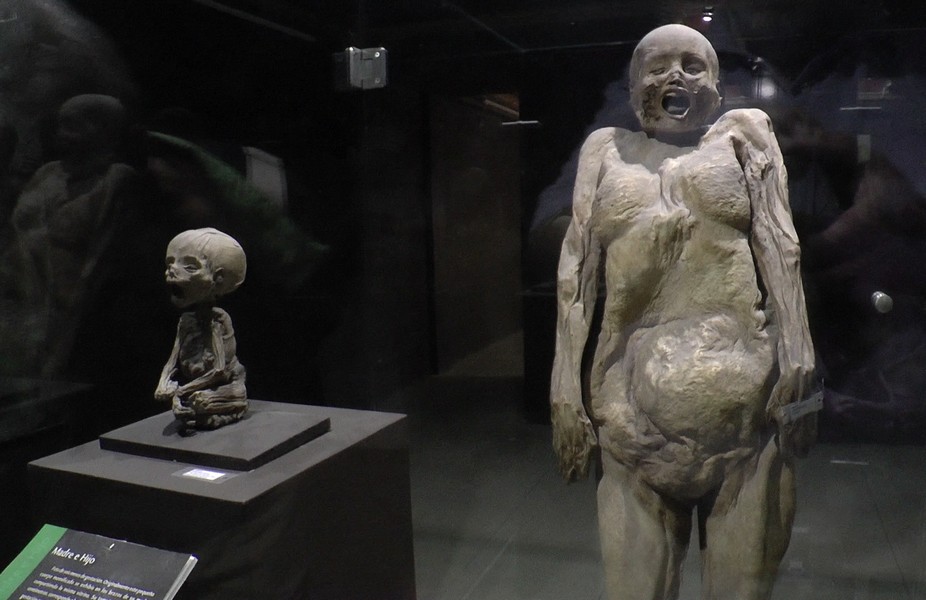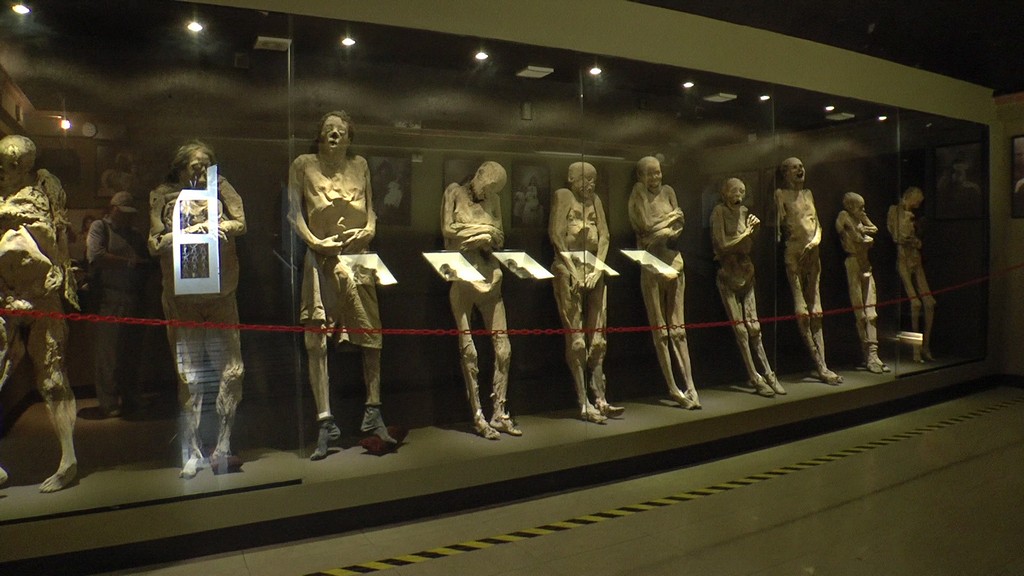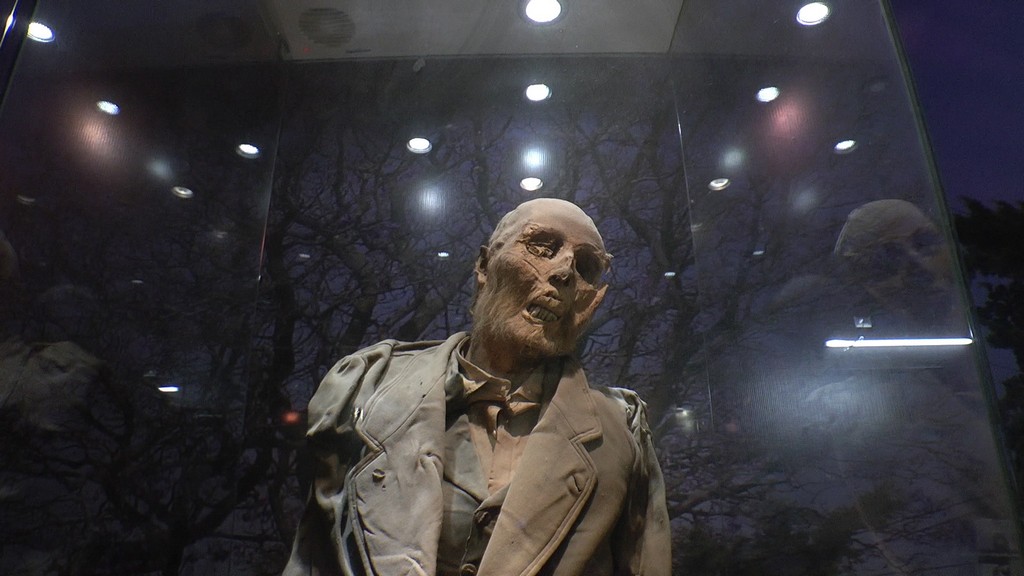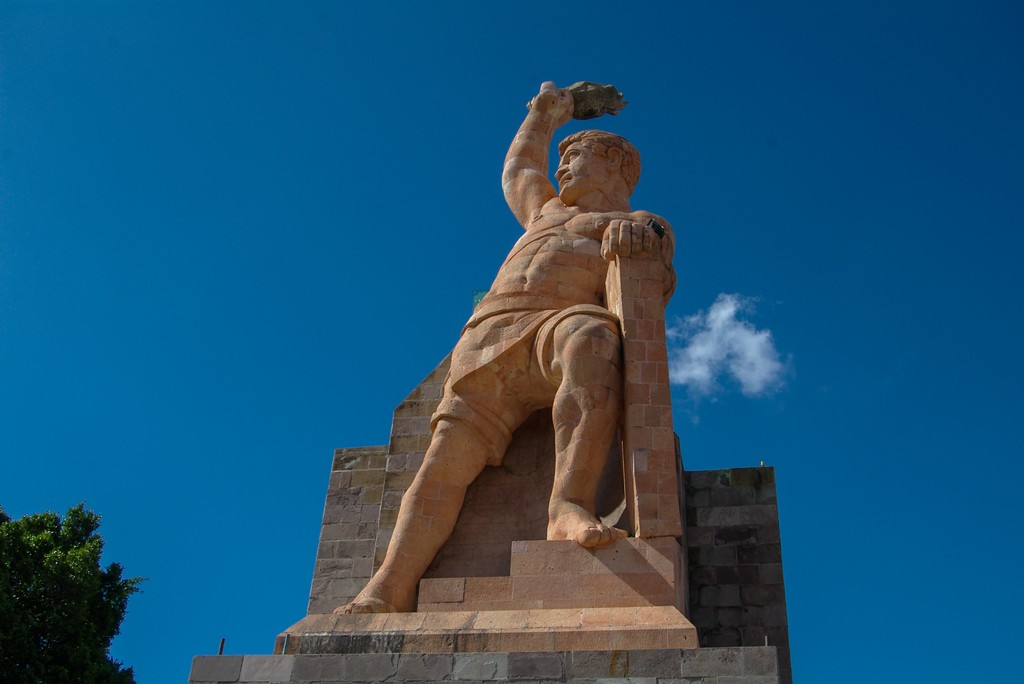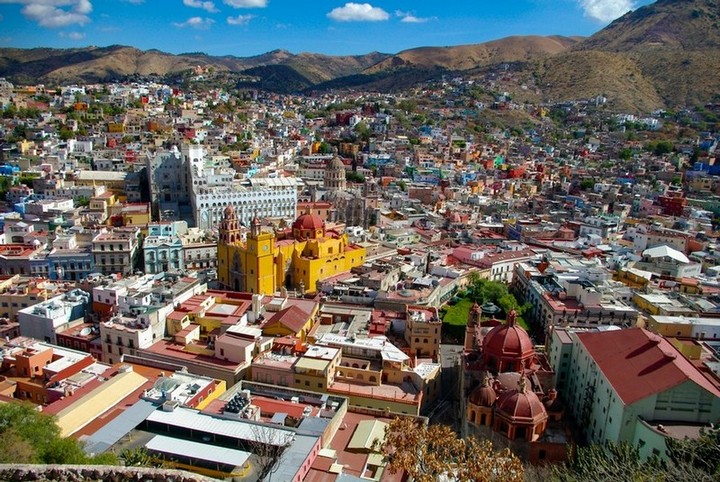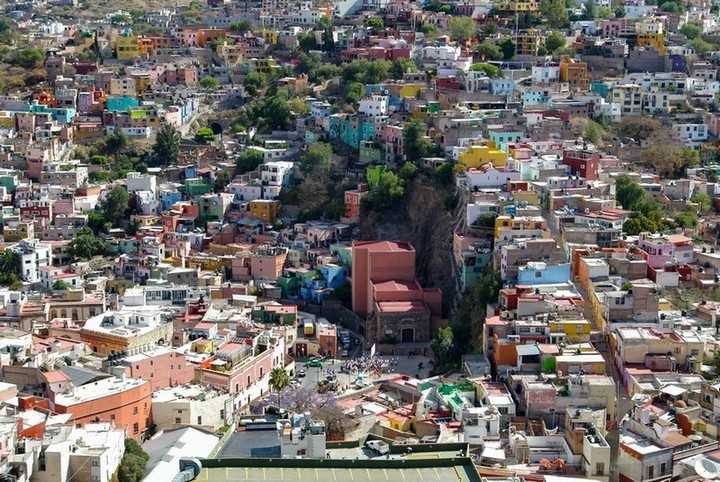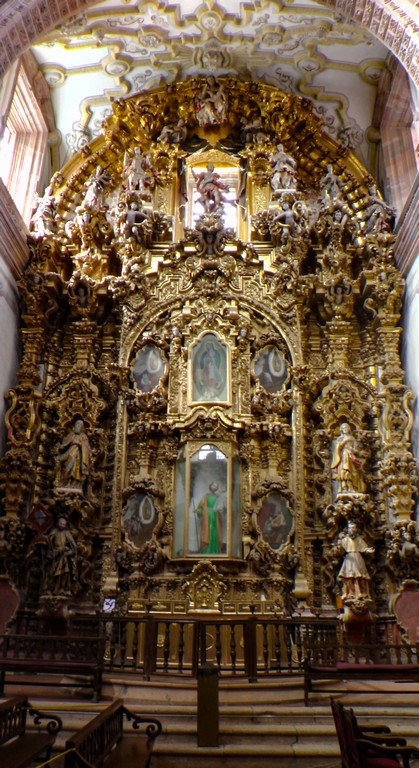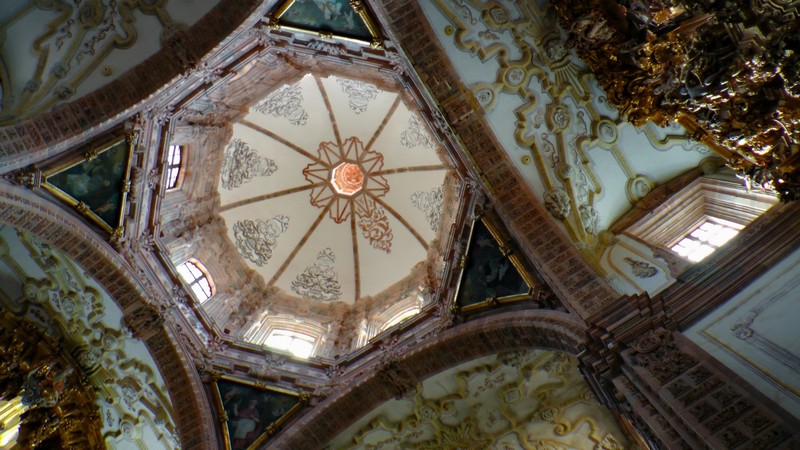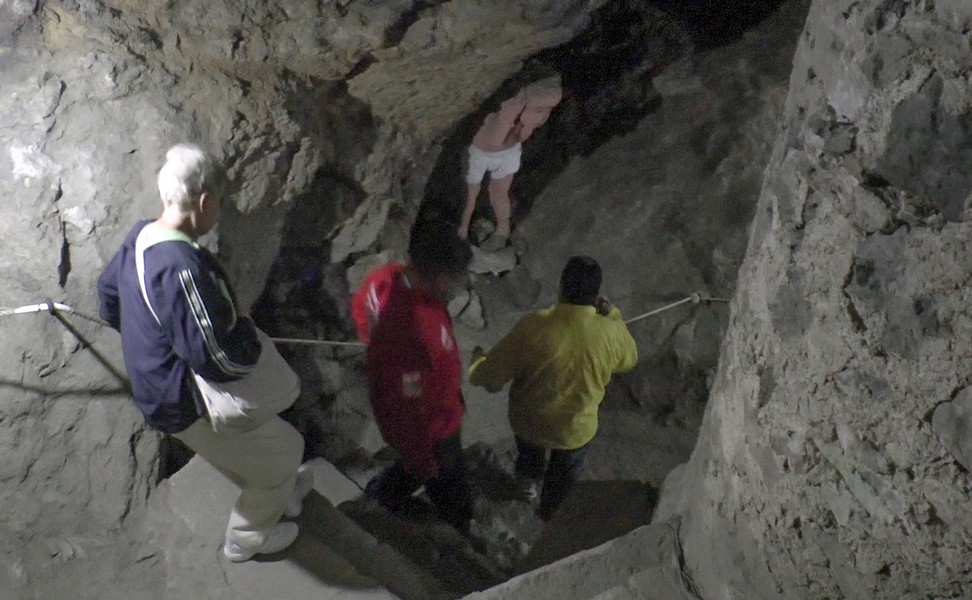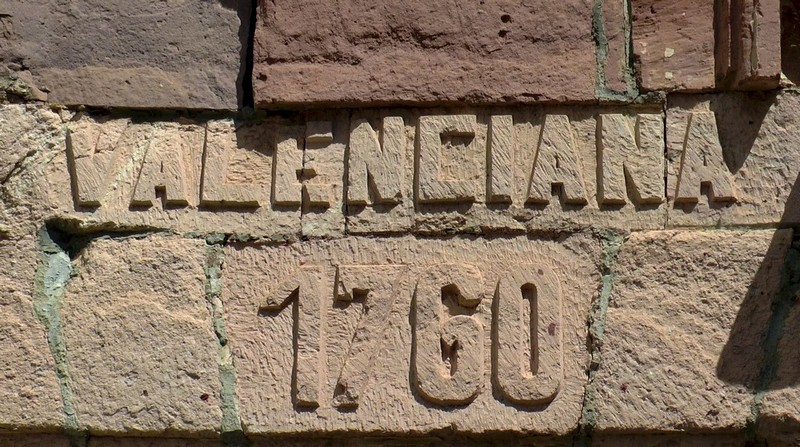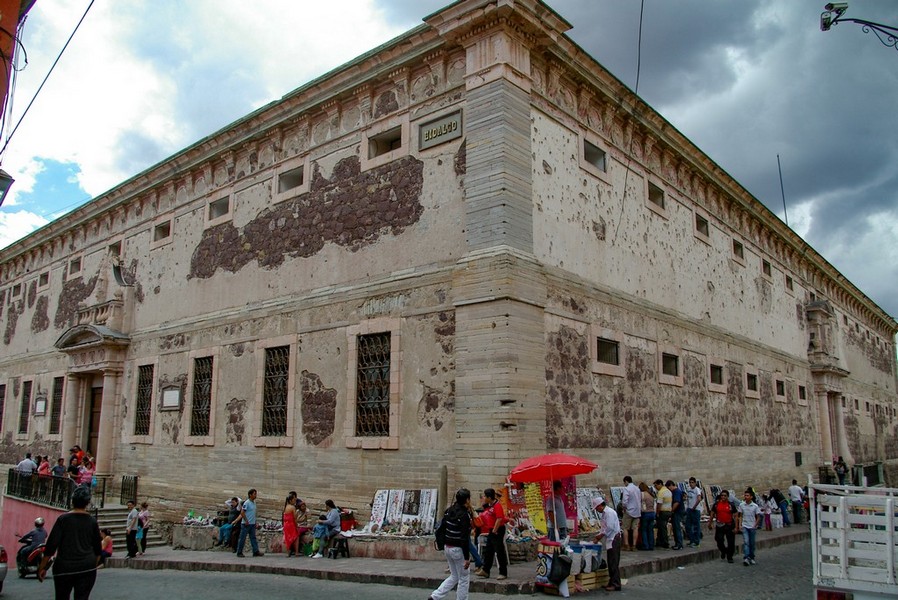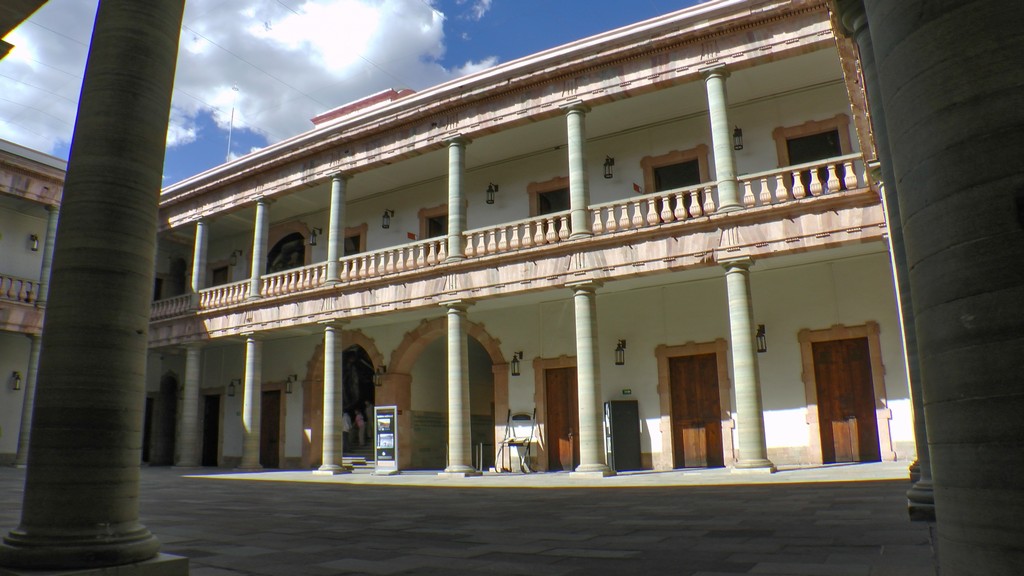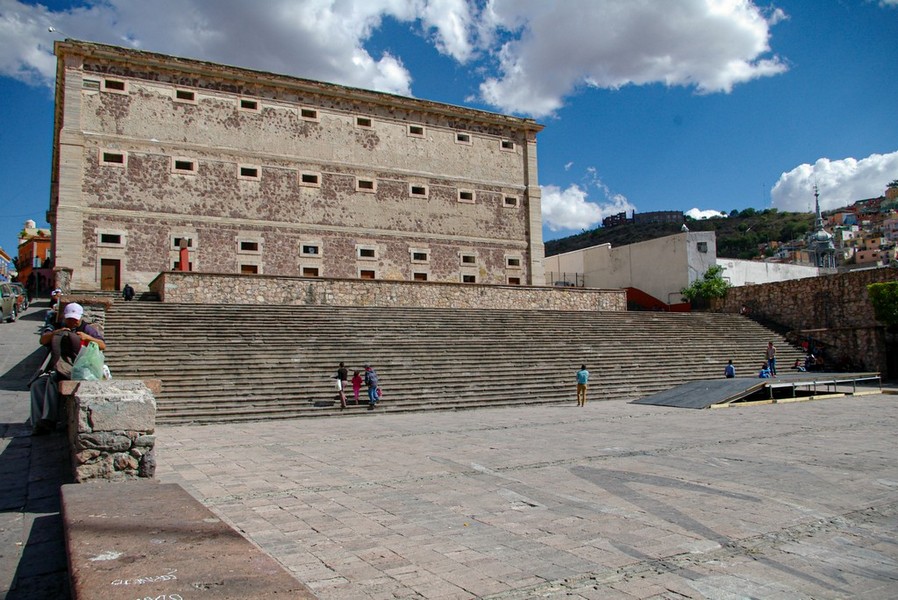Saturday, 8 March 2014
The Jardin Union (central) area has many restaurants, Mariachi groups, churches and ‘Callejoneadas’ groups who lead groups and wander the old downtown in costume performing songs and dances. Just off the square is the wonderful Juarez Theater which was opened in 1903; it is one of the principal sites used for the annual Cervantes celebration which started in 1953.
The town which is 6,600 feet above sea level was founded in 1548 after the Spanish discovered extensive silver and gold deposits. It became a wealthy area and was the leading producer of silver during the 18th century; mining continues today but at a reduced rate. The town follows a narrow valley, so streets are just wide enough for single cars , narrow alleys and sets of steps go up the side of the hills. Because of its wealth, it has some wonderful architecture and many of the churches are great examples of the Baroque and Churriguesque style. It is also a university town and the plazas are thronged with young people at the weekend.
The rivers which formed the valley were a constant source of flooding, so tunnels and ditches were created to divert water and reduce flooding. In the 1960’s, dams were built to finally control the flooding. The tunnels and ditches were then converted into underground roadways complete with intersections, sidewalks and even bus stops. Additional road tunnels have since been built. The entrances to some of the tunnels are not always obvious and you can be surprised by cars seemingly appearing out of nowhere. There are many of them under the town and it is the easiest way to navigate the city by car.
Guanajuato is also the site of the first battle in the war for independence from Spain in 1810. This took place at the Alhóndiga de Granaditas, a granary where a local miner helped defeat the Spanish and gain entry to the building. This is commemorated by a large monument called ‘El Pípila’ on a hill overlooking the town. It can be reached by a funicular tramway near the Jardin. The Alhóndiga is now a well laid out museum of the area’s history.
The Morning Tour – Beginning our private tour, we went first to the unique Mummy Museum. This Museum contains a large collection of naturally mummified bodies from a cemetery located directly behind the museum. The first bodies were exhumed in the 1870’s and stored in a warehouse due to a new tax levied on graves. Over time, people began to visit the warehouse to see these remains, some of which were eventually put on display. We were the first people of the day to enter the new climate-controlled museum which was created in 1970’s to protect and display the mummies. Because it was early, we had the Museum all to ourselves. It was remarkably interesting and not spooky as it has been very well laid out with informative labels in both Mexican and English. It has become one of the major tourist attractions of the town.
Our tour continued through the older affluent quarter of the town to the Pipilar monument which has wonderful views over the central area of the town. Pípila, became famous for an act of heroism near the very beginning of the Mexican War of Independence, on 28 September 1810. With a long, flat stone tied to his back to protect him from the muskets of the Spanish troops, Pípila carried tar and a torch to the door of the Alhóndiga and set it on fire. The insurgents–who far outnumbered the Spanish in the warehouse–stormed inside and killed all the soldiers and the civil Spanish refugees. Some accounts say that Pípila was not alone but went accompanied by other indigenous miners ready to fight for their freedom from the Spanish, but as the story is told today in Guanajuato, Pípila stood alone to break through the door.
Next on the stop was the Valenciana Church (Church of San Cayetano) which sits close to the mine. It is an 18th. century stone church which sits on a hillside and has an ornate Churriguesque style interior with three alters heavily covered in gold leaf. We then visited Valenciana mine, one of the old silver mines which is now a museum and took a private tour of the old mine workings. This included descending about 180 feet underground and a visit to a model shop depicting many of the old mines. During its peak activity, this mine accounted for almost a third of the worlds production of Silver.
In the afternoon, we had lunch in the Jardin at the Café Valadez. Then, we wandered through the many narrow streets making our way to the Alhóndiga de Granaditas or Granary where in September 1810 about 300 Spaniards took refuge while 20,000 troops led by Hidalgo stormed the building. This eventually turned into a rout and the town was pillaged. The four main participants, Hidalgo, Ignacio Allende, Juan Aldama, and José Mariano Jiménez were eventually captured and shot. Their heads were hung from the four corners of the building until Mexico achieved its independence.
In the evening, we returned to the Jardin and had dinner on the Verandah of the Hotel San Diego which has an Italian restaurant overlooking the Jardin square. By then it was dark, and the entire square was alive with people enjoying the evening. We watched the various ‘Callejoneadas’ groups warming up their groups before heading off to various parts of the city. Music from the many Mariachi groups wafted through the night air.

